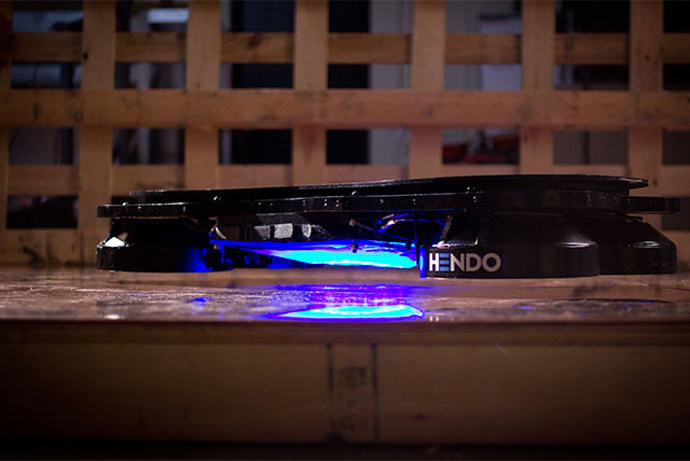McFlying out the door? ‘Back to the Future’-style hoverboard comes to life

It’s coming, guys! The future is coming! The hoverboard from an imagined 2015, featured in the ’80s hit flick ‘Back to the Future II,’ is now a reality thanks to an architect hoping to protect buildings from earthquakes with the power of magnetism.
The announcement was made exactly a year before the much
anticipated ‘Back to the Future Day’ – October 21, 2015 – to
which lead characters Marty McFly and Doctor Emmett Brown travel
in the Robert Zemeckis classic.
Past attempts to create a board modelled on the one used in Back
to the Future II always wiped out under the shaky ground of two
magnets, which made controllable levitation a near impossibility.
Read more:Aquatic hoverboard goes on sale, takes water sports to whole new level
The Hendo hoverboard design has got around this problem by using four disc-shaped engines instead of two. The engines generate a special magnetic field which “literally pushes against itself,” producing the lift which takes the board off the ground.
The technology was the brainchild of Greg Henderson, who,
according to Forbes, developed a method to use electromagnetic
fields to separate buildings in the event of an earthquake. He
soon realized that the technology could be utilized in many other
ways, specifically transportation.
But those hoping to really get some air like lead character Marty
McFly might have to manage their expectations. In its current
incarnation, the hoverboard levitates just one inch off the
ground.
An even bigger limitation is superficial by design; the surface which the hoverboard can operate on. While McFly was able to jet over most everything but water, the Hendo hoverboard only operates on non-ferromagnetic surfaces – those which are not attracted to magnets.
It also remains somewhat noisy and can only stay aloft for roughly seven minutes.

Bugs and all, the 18th prototype has still proven a great advance which has nowhere to go but up. Besides the scientists still have 364 days to improve their creation before Marty McFly’s arrival from 1985.
Arx Pax, the 20-person start-up beneath the board, has just launched a Kickstarter campaign in hopes of raising $250,000 so that board call roll (or levitate) out into full scale production.

If they reach their target in time, 10 beta versions of the boards will be up for grabs, though they will sell for a weighty $10,000 a pop.
And keeping in the spirit of the film, you’ll have to wait until October 21, 2015 – the same date on which Marty and Doc Brown arrived in their DeLorean time machine to set the future straight – before you can pick up the board.















